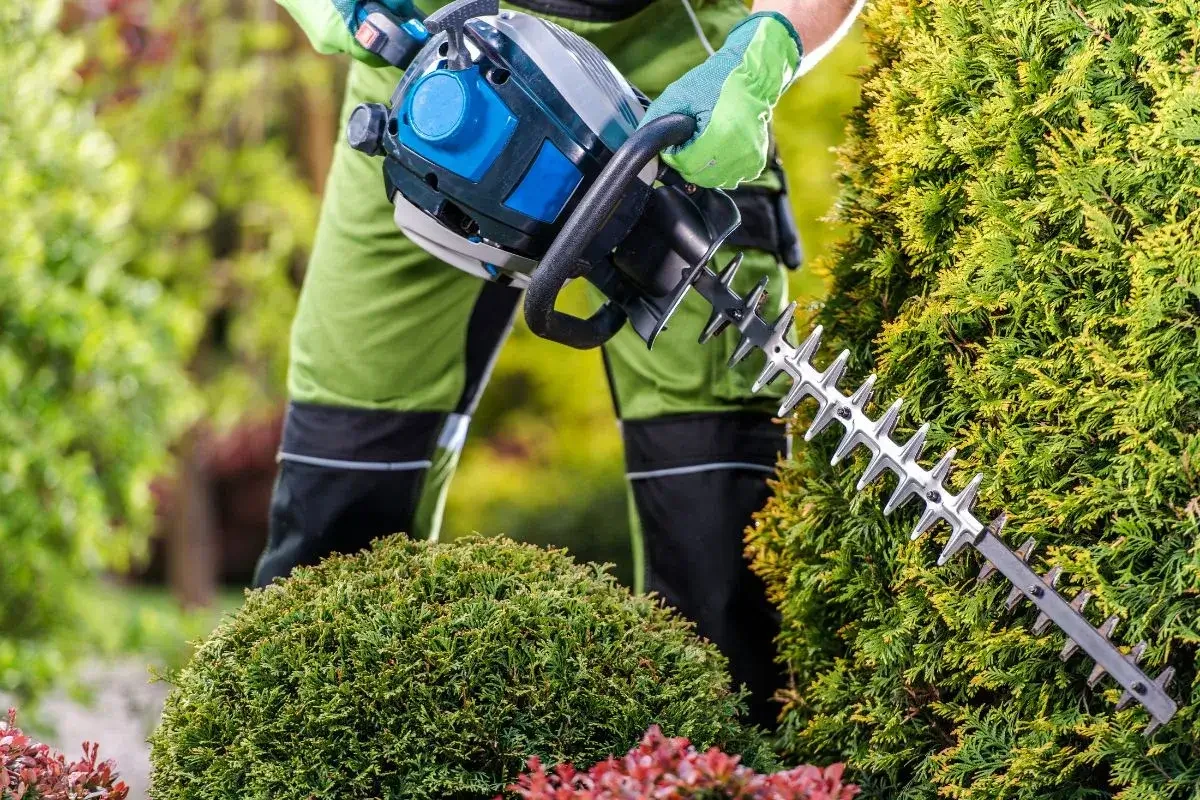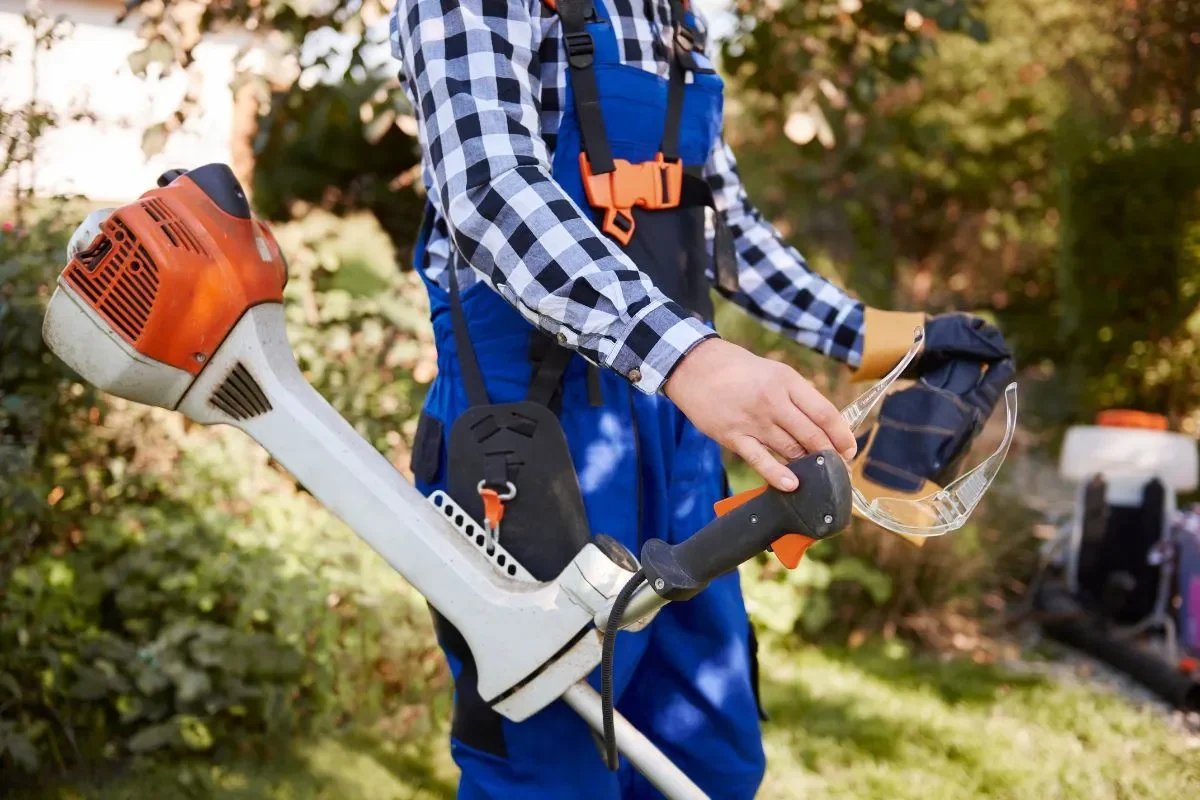Weed wackers, also known as string trimmers, are indispensable tools for maintaining a neat and tidy yard. They allow you to reach areas that a lawnmower can’t, such as around trees, under bushes, and along fences. Choosing the right weed wacker and understanding how to maintain it can make a significant difference in your gardening experience. This comprehensive guide will walk you through the different types of weed wackers, their key features, maintenance tips, and safety guidelines.
Types of Weed Wackers
Gas-Powered Weed Wackers
Gas-powered weed wackers are known for their power and portability, making them ideal for large yards and tough weeds.
- Advantages: These models are more powerful, making them suitable for heavy-duty tasks. They are also portable, as they do not require a power cord.
- Disadvantages: Gas-powered trimmers are heavier and noisier than their electric counterparts. They require regular maintenance, including fuel and oil changes, and they emit fumes.
Electric Weed Wackers
Electric weed wackers are available in two types: corded and battery-powered (cordless). Both types are quieter and easier to maintain than gas-powered models.
Corded Electric
- Advantages: Corded electric trimmers are lightweight, quieter, and produce no emissions. They offer a continuous power supply, so you don’t have to worry about running out of battery or fuel.
- Disadvantages: The main limitation is their range, as you are restricted by the length of the power cord. This can be cumbersome, especially in larger yards.
Battery-Powered (Cordless)
- Advantages: Cordless electric trimmers combine the benefits of electric models with the portability of gas-powered ones. They are quieter, produce no emissions, and are easy to start.
- Disadvantages: The battery life limits the runtime, and they are generally less powerful than gas models. The batteries also require recharging, which can be inconvenient for extended use.

Key Features to Consider
When choosing a weed wacker, several features can influence your decision. Understanding these can help you select the best tool for your needs.
- Cutting Width
The cutting width determines how much area the trimmer can cover in one pass.
- Wider Cuts: Trimmers with a wider cutting width can cover more ground quickly, making them ideal for large areas.
- Narrower Cuts: These are better for precision trimming in tight spaces and around delicate plants.
- Weight
The weight of the trimmer is a crucial factor, especially if you plan to use it for extended periods.
- Lighter Models: Easier to handle and maneuver, particularly important for those with limited strength or endurance.
- Heavier Models: Generally more powerful but can cause fatigue faster.
- Handle Type
Comfort and control are greatly influenced by the type of handle on the trimmer.
- Adjustable Handles: These can be customized to fit your height and preferred grip, enhancing comfort.
- Ergonomic Grips: Designed to reduce strain and improve control, which is beneficial during prolonged use.
- Shaft Type
The shaft type affects the trimmer’s reach and ease of use.
- Straight Shaft: Provides better reach under bushes and hedges. It is also typically more robust and suitable for heavy-duty tasks.
- Curved Shaft: Easier to handle and generally more comfortable for shorter users. It is better for lighter trimming tasks.
- Line Feed System
The line feed system determines how the cutting line is fed out as it wears down.
- Bump Feed: Allows you to manually feed more line by tapping the head on the ground. It offers better control over the amount of line used.
- Automatic Feed: Automatically advances the cutting line as needed, which can be more convenient for continuous trimming.
- Fixed Line: Uses pre-cut lines that you insert manually. This system can be simpler but may require more frequent stops to change the line.

Maintenance Tips
Proper maintenance of your weed wacker ensures it operates efficiently and has a longer lifespan. Here are some essential maintenance tips:
- Regular Cleaning
- Cutting Head: Keep the cutting head clean to prevent grass and debris buildup. This ensures efficient operation and reduces wear on the trimmer.
- Exterior: Wipe down the exterior after each use to remove dirt and grass clippings.
- Line Replacement
- Check the Line: Regularly inspect the cutting line and replace it when it becomes worn or breaks. Using a fresh line ensures effective trimming.
- Spool the Line Properly: When replacing the line, ensure it is spooled correctly to avoid tangling and ensure smooth operation.
- Fuel and Oil (Gas Models)
- Use Fresh Fuel: Always use fresh fuel and the correct fuel mix as specified by the manufacturer. Old fuel can cause starting and performance issues.
- Check Oil Levels: Regularly check the oil levels and top up as necessary. Change the oil according to the manufacturer’s recommendations.
- Battery Care (Cordless Models)
- Charge Properly: Follow the manufacturer’s instructions for charging the battery. Overcharging or undercharging can reduce battery life.
- Storage: Store the battery in a cool, dry place when not in use. Extreme temperatures can damage the battery.
- Sharpening Blades
- Blade Models: If your trimmer uses blades instead of string, keep them sharp. Dull blades can tear grass instead of cutting it, leading to poor performance.
- Regular Sharpening: Regularly sharpen the blades according to the manufacturer’s instructions. This ensures clean cuts and efficient operation.
Safety Tips
Using a weed wacker can be dangerous if proper safety measures are not followed. Here are some essential safety tips to keep in mind:
- Wear Protective Gear
- Safety Glasses: Protect your eyes from flying debris.
- Gloves: Wear gloves to protect your hands from cuts and blisters.
- Long Pants: Wear long pants to protect your legs from debris and accidental contact with the trimmer line.
- Hearing Protection: Gas-powered models can be loud, so consider wearing ear protection to prevent hearing damage.
- Check the Area
- Remove Debris: Clear the area of rocks, sticks, and other debris that could be thrown by the trimmer.
- Survey the Area: Make sure there are no bystanders, pets, or obstacles in the vicinity.
- Proper Handling
- Hold Firmly: Always hold the trimmer with both hands to maintain control.
- Safe Distance: Keep bystanders at a safe distance to avoid accidental injury.
- Turn Off When Not in Use: Turn off the trimmer when not in use or when moving between areas to prevent accidents.
Choosing the Right Weed Wacker
Selecting the right weed wacker for your needs involves considering various factors, including the size of your yard, the type of vegetation, and your personal preferences.
- Yard Size
- Small Yards: For small yards, a corded electric or battery-powered trimmer is usually sufficient. These models are lightweight, easy to use, and require minimal maintenance.
- Large Yards: For larger yards, a gas-powered trimmer is often the best choice. They provide the power and runtime needed to handle extensive areas without frequent recharging or refueling.
- Type of Vegetation
- Light Vegetation: For light grass and weeds, an electric trimmer (corded or cordless) will work well. These models are easier to handle and less noisy.
- Tough Weeds and Thick Grass: For tougher vegetation, a gas-powered trimmer is more effective. They have the power to cut through thick grass and stubborn weeds.
- Personal Preferences
- Ease of Use: Consider how easy the trimmer is to start, handle, and maintain. Electric models are generally easier to start, while gas models require more effort.
- Environmental Impact: If you are concerned about emissions and noise, opt for an electric trimmer. They are quieter and produce no emissions.
- Budget: Determine your budget and find a trimmer that offers the best features within your price range. Keep in mind that gas-powered models are usually more expensive upfront and require more maintenance costs.
Common Problems and Troubleshooting
Even with proper maintenance, you may encounter issues with your weed wacker. Here are some common problems and their solutions:
- Trimmer Won’t Start
- Gas Models: Check the fuel and oil levels, and ensure the fuel is fresh. Inspect the spark plug and replace it if necessary. Clean or replace the air filter.
- Electric Models: Ensure the battery is charged or the power cord is plugged in. Check for any loose connections or damaged wiring.
- Poor Cutting Performance
- Worn Line: Replace the cutting line if it is worn or broken.
- Dull Blades: Sharpen or replace the blades if your trimmer uses them.
- Line Feed Issues: Ensure the line feed system is functioning correctly. Clean the spool and check for any tangles.
- Excessive Vibration
- Unbalanced Head: Check if the cutting head is properly balanced. Replace any damaged parts.
- Loose Parts: Inspect the trimmer for any loose screws or bolts and tighten them.
- Overheating
- Gas Models: Ensure the cooling fins are clean and unobstructed. Check the fuel mixture.
- Electric Models: Avoid using the trimmer continuously for long periods. Allow it to cool down if it becomes too hot.
Choosing the right weed wacker and maintaining it properly ensures a well-kept yard and a longer lifespan for your tool. By following this comprehensive guide, you can make an informed decision, keep your trimmer in top shape, and enjoy a beautiful, well-maintained garden. Happy trimming!
Get More Updates: https://www.timelinetale.com/







